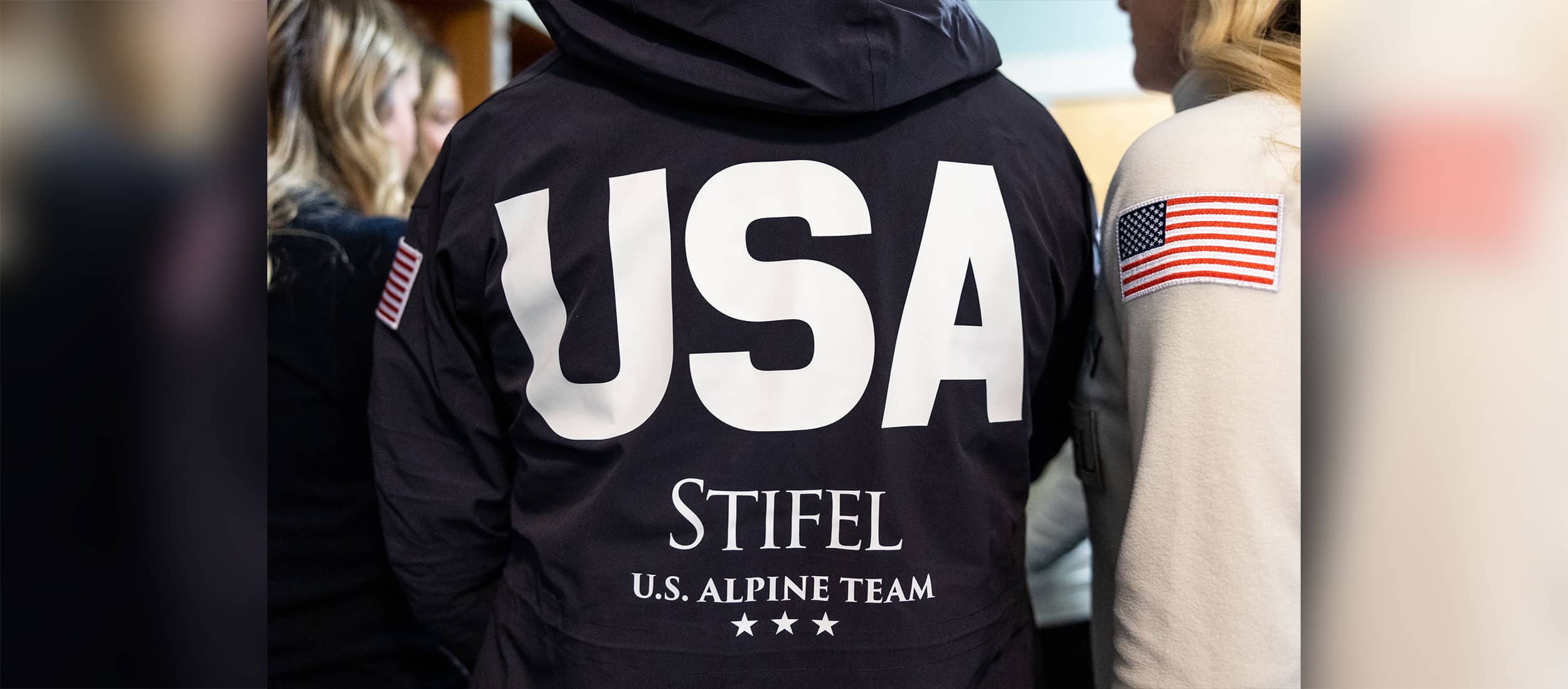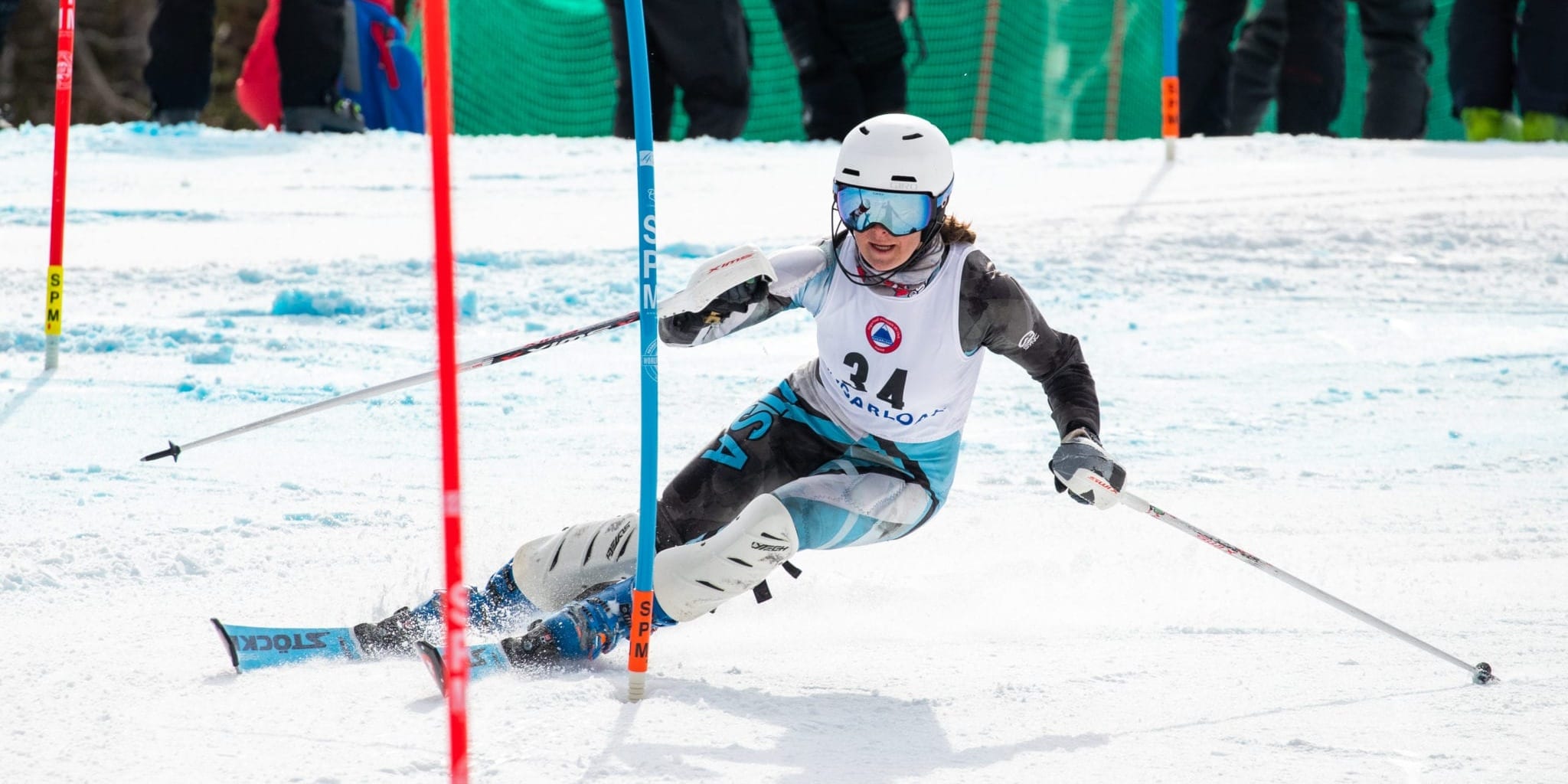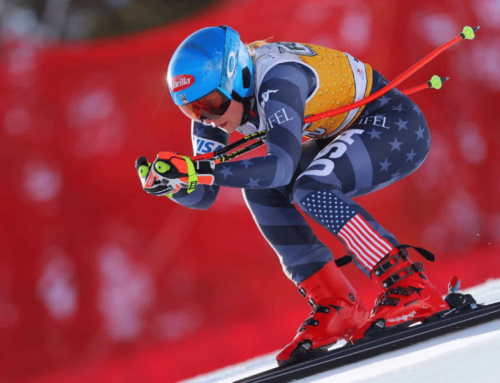BEHIND THE GOLD: A Career of Sport Changing Memories
I’ve been a fan of alpine ski racing since watching on TV as a seven-year-old in Wisconsin when Penny Pitou won silver in the 1960 Olympic downhill at Squaw Valley. My run with the U.S. Ski Team has been a privilege. So, I thought I would share a few of my own favorite moments. My criteria for this list: First, I had to be there. Secondly, it had to be a moment that registered with me emotionally at that moment and has stood the test of time. I don’t always gravitate to the obvious. So you may see some surprises in here. But each of these memories positively shaped ski racing in America.
March, 1991 – Ski Sunlight
Five days before the World Cup dropped into Vail, the top-seeded women were in tiny Ski Sunlight outside Glenwood Springs, Colo. for a Nor Am GS. Little known Maine skier Julie Parisien, 19, took a dominating first run lead. The Austrians protested – it HAD to be a timing error. It was not. That was the worst thing the Austrians could have done. An inspired Parisien won by nearly two seconds. A few days later, she was fifth at Vail in just her second World Cup. The following week she won in Waterville Valley. But on that dreary, overcast day at Ski Sunlight, history was made and a new era began.
February, 1993 – Morioka-Shizukuishi
Shizukuishi is a giant volcano sitting on on the flat plains near the city of Morioka, Japan with storms colliding over its towering peak. It wasn’t great for racing, but the powder skiing was legendary. This was the breakout for Picabo Street with silver in combined. Over the next five years she would change the fortune of the U.S. Ski Team. After the medals ceremony that evening, a smiling Picabo signed autographs for Japanese children for what seemed like hours. Days later, we gathered medalists Picabo Street, AJ Kitt and Julie Parisien in kimonos at a mountain cabin as Allsport photographer Mike Powell recorded history.
February, 1994 – Lillehammer
There were few expectations heading into the Olympic downhill on opening weekend. The team was smarting from Sports Illustrated’s E.M. Swift who called them the ‘lead-footed snowplow brigade.’ The team took that as motivation. Tommy Moe’s downhill gold ignited a medals rush. Moe took silver in super G. Picabo Street silver in downhill. Diann Roffe starting first, took gold in super G. As Tommy Moe celebrated his victory, first lady Hillary Clinton was there to greet him. We stuffed Sports Illustrated’s legendary writer William Oscar Johnson into the car with Moe for the drive to the medals ceremony. The result was the remarkable Golden Boy cover story as Tommy became a legend. It was a seminal day for the U.S. Ski Team, foreshadowing the decades of downhill success that would follow.
March, 1995 – Bormio
Of late, we’ve been spoiled by Lindsey Vonn and Mikaela Shiffrin. In 1995, we thought it couldn’t get any better. There were eight women’s downhill World Cups that year. Picabo Street won five; Hilary Lindh took two. The only one they lost was the first of two races in Cortina d’Ampezzo when Street was second by .02 to Michaela Gerg after she failed to wear a new downhill suit (it’s about the details). Many of us flew to Bormio for World Cup Finals to join the ceremony in Piazza Cavour – the first American globe in 11 years. Picabo broke into tears, kissing the globe. I think back often to the scene in the plaza. We didn’t know when it would happen again.
February, 1998 – Hakuba
Trivia question. How many major super G’s did Picabo Street win in her career? Just one. But it was the right one! Picabo was coming off yet another major knee injury that year. It was a frustrating comeback. A fourth in Cortina d’Ampezzo was the lone bright spot. Weather pushed the downhill, so super G would be first. Coaches Herwig Demschar and Ernst Hager inspected with her. The course was straight. Known more for her ability to tuck and glide, Picabo was never much of a turner. But this was a downhiller’s super G. They looked at each other and nodded, getting word to Rossignol serviceman Cookie Kairys who stealthy prepped her silver medal downhill boards from Lillehammer and took them to the top. She clicked in, pointed them to the finish and took the lead. The Austrians quickly reacted, getting downhill skis to Alexandra Meissnitzer. She came within .01 – closest margin in history. But Picabo was golden!
January, 2001 – St. Anton
You could have heard a pin drop. Opening men’s event at World Championships. The Austrians completely stacked in super G. And this tiny American guy comes through to steal gold. Ridiculous! Daron Rahlves’ super G victory ushered in a new era for the U.S. Ski Team. Daron was the champion American ski fans needed. Suddenly, ‘D’ was thrust into the limelight and he delivered – California boy, good looking, everybody’s friend. He had personality and charisma. The Austrians quickly learned to love him. It was a big party that night in U.S. Ski Team House at Bobo’s in St. Anton – a little Mexican cuisine in the Arlberg.
January, 2002 – Schladming
Much is written about the fabled Hahnenkamm in Kitzbühel. For my money, though, The Night Race at Schladming has it beat. The combination of a race course fans can actually see, the focus you get at night looking at floodlit slopes, the tens of thousands of screaming fans lining the Planai and the liberally-flowing alcohol are a recipe for success. A year earlier, we hung with Bode Miller and friends in a hotel room in St. Anton. His knee was trashed. Just 10 months later, he won his first World Cup in Val d’Isere. So he was on the radar – a breakout star. But winning The Night Race? Not a chance. He led Jean-Pierre Vidal after the first run. And he kept it going. Just weeks before the Olympics, Bode Miller had arrived.
February, 2002 – Salt Lake City
The foreshadowing we had seen from Bode Miller a few weeks earlier in Schladming manifested itself in a remarkable Olympics with silver in both GS and combined. But it was his ‘near death’ escapade in the combined downhill at Snowbasin that captured attention and showed the world what was in store over the next decade. Coming out of Offtrack, Bode entered a right-footed turn into Slingshot. At a speed likely in excess of 65 mph, he bounced on his hip then rocketed back to his feet, his body contorted and his knees bearing intense pressure as he launched off the Buffalo Jump into the final pitch to the finish. This was the intensity and never-say-die attitude we would come to know from Bode. After that, no one ever counted him out of anything.
January, 2003 – Kitzbühel
There’s nothing comparable for a downhill racer than winning the Hahnenkamm downhill. On a day of fog, delays and a move of the start, Daron Rahlves navigated through low visibility technical turns in the middle and pinned the bottom to win – 44 years after Steamboat’s Buddy Werner had scored the only other USA win. Serviceman Willi Wiltz provided the rockets. It was quiet in the finish with no Austrians on the podium. There are so many rituals in Kitz. The walk through the tunnel – Strasse der Sieger. Getting your name on a gondola car. And tending bar at The Londoner that night. D lived up to his role as Hahnenkamm Sieger.
2004-2006, Beaver Creek
There’s nothing like winning at home. The mid first decade was arguably the best run in the history of men’s speed for the USA. Bode and D were in their prime. Steven Nyman was coming on. The guys had won in Europe. Now it was time to win at home. Being in the stands at Beaver Creek was a bit like Woodstock – everybody was there. And why not? For three straight years, Bode and Daron took turns winning on Birds of Prey. Steven Nyman hit the podium. Andrew Weibrecht had his attack from the back. These were the glory years under coach Phil McNichol – the era of the flame shirts.
February, 2006 – Sestriere
It was not a great vibe at the Olympics in Sestriere. Lots of strife. Anyone remember Tabata? Or the athlete RVs? I also remember being jammed with three press officers and one of their girlfriends in a single room. It was one PR issue after another. I was in Chamonix a few weekends earlier when the ‘Bode skiing drunk’ story surfaced on CBS 60 Minutes. It was a rugged first few days in Sestriere. Then, things suddenly changed. In the men’s combined, Bode was on track to win. Then, time stood still. Were they really saying he was disqualified? Did he really straddle? Ted Ligety was 2.20 seconds back in 22nd after the downhill. And he went on to win? Gold medal. Ten days later, the women’s GS was blanketed with fog, snow, rain – just about every weather element imaginable. I like to call Julia Mancuso a daughter of KT-22. She is a true big mountain skier. She relished the horrific conditions, focused on her job and skied two runs of aggressive GS to take gold. Only two small memories. But they were golden.
February, 2010 – Whistler
Lindsey Vonn was an athlete in transition at what was her third Olympics. A youngster at Salt Lake City, her combined finish was notable. In 2006, she had a good downhill but was known more for her training crash that had her airlifted to the hospital. She came into Whistler having won six straight World Cup speed events and on the heels of two overall crystal globes. Her career was truly kicking in. But then came the fog. And poor snow. The women started their first training run, but had it scrapped. They came back five days later with a bizarre training scenario. It was one run from the top down to the final pitch. Then a second training run on just the finishing face – a 17-second sprint. Only a handful of women had skied the entire course at once. Austria’s Elisabeth Goergl took the early lead, starting fifth. Julia Mancuso came down 10th, knocking her out by almost a second. Lindsey started 17th, blazing to a half-second lead over her teammate. She collapsed to the snow at the back of the finish corral screaming at the top of her lungs. She had become an Olympic champion.
2013 – Schladming
We Americans have a habit of spoiling the party in Austria. Fortunately, we always have had a lot of Austrian fans. Schladming World Championships Then Ted Ligety started winning everything. It was just uncanny – the kid could not lose! Super G, combined, giant slalom – triple gold. Suddenly he was compared to Jean Claude Killy and Toni Sailer. I missed the super G but flew over for the rest. Hundreds of cameras were trained on Ted with the historic third gold. The permanent Olympiastadion built for World Championships transformed the finish from the time Bode won The Night Race 11 years earlier. The finish bowl created a din on the snow. So when 16-year-old Mikaela Shiffrin won the slalom, it was chaotic. Legendary ORF director Michael Kögler was like a maestro that week with unique camera angles that told the story of alpine ski racing like never before. As Mikaela stood in the finish, a gyro mounted camera and operator circled her endlessly as she knelt in the snow. It was some of the most poignant victory footage ever.
2018 – Jeongseon
Mikaela Shiffrin’s gold and silver notwithstanding, one of my most poignant memories is from Lindsey Vonn’s downhill bronze. Knowing her passion and the emotion she carried into the Olympics, we all expected a bronze to be a bitter disappointment. Standing near her during her final NBC finish interview, fighting through tears and reminiscing about what ski racing had brought her was symbolic of why those of us who work for the U.S. Ski Team care so profoundly about athletes and their dreams.
Editors note: Though SRM searched a photo for each of Kelly’s top memories, photos were not available to us for each one.


































